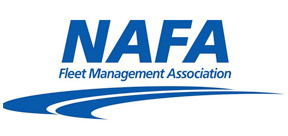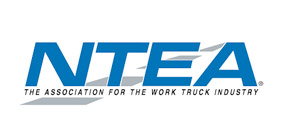Finding common ground: Transcending police fleet politics
People tend to use the phrase “playing politics” distastefully; maybe that’s because anytime rank, title and concerns about the “greater good” come up in a conversation, you know the job’s about to become difficult. But managers of centralized municipal fleets feel the burden of political considerations in a particularly acute way, because they have to be added to an already lengthy list of priority qualifications that includes the department’s number of spares, first responder status, impending weather, uniqueness of the vehicle and technician availability just for starters.
Law enforcement and fleet management work toward a shared goal of serving the common good, believes Mario Guzman, general services manager, city of West Palm Beach, Fla. Fleet departments recognize that police are passionate about their mission and have an expectation of performing their duties in a safe and fully operational vehicle. The role of the fleet manager in that relationship is to meet the expectation and ensure preventive maintenance has been carried out in a timely manner. Another significant consideration is that police organizations are inherently militaristic in their structure while fleet management is usually structured like a business: The fleet manager has to factor in financial stability and liability levels, and with each passing year, sustainability moves higher up the list of organizational values as well.
At NAFA’s annual Institute and Expo in April, Guzman and fellow fleet professionals Jeff Jeter, fleet manager for Chesterfield County’s Department of General Services in Virginia, and Robert Martinez, deputy commissioner of the Support Services Bureau, New York Police Department, discussed the intangible aspects of managing a centralized fleet that includes law enforcement. Truly understanding the role of law enforcement, the role of each officer within it and the dynamics that take place within the department took Guzman and Jeter a long way toward providing vehicles and service that police, the city finance officer and the fleet department could work with, they said. DUI units, counter-terrorism, canine units, active shooter and hostage units carry different amounts of equipment and require different performance from their vehicles. Learning the details of those differences can take a fleet manager a long way toward meeting their vehicle needs with minimal conflict.
A moment when the conversation turned grueling in Chesterfield, Jeter said, was in regard to a 2013 switch to fueling police cruisers with propane. “Anything and everything” was wrong with the 13 alternatively fueled vehicles that finally hit the road, some patrolmen said.
“But now, it’s going well. It’s actually growing, and we’re getting ready to put some of the new police Interceptors on propane. In the sheriff’s department we’ve got nine of its vehicles running on propane — on biofuel, so it’s unleaded and propane. So the politics there, it was kind of rough; but we’re here as the fleet manager to work with the police department … we’re here as a partnership.”
Failing to stand up for that mutual mission — even in the interest of preventing conflict — can sometimes wind up creating a more undesirable, even life-threatening situation, noted Jeter. What has worked for him is making a concerted effort to let law enforcement know how dedicated fleet is to the shared-mission notion. He also makes it known that input is welcome, and that mutual consideration is expected.
In West Palm Beach, where the fleet services department is responsible for parks and public works vehicles as well as police, being sympathetic to law enforcement’s preferences and expectations translates into holding police vehicles to an elevated standard of preventive maintenance. Tires that are patched or plugged on the former are replaced on police vehicles, which are also on a different preventive maintenance schedule.
Because fleet policies also change with administrations, figuring out which objective to prioritize can feel like driving in a traffic circle. New York City, for example, is now taking a step back from its pole position in the race to acquire alternative-fuel vehicles after current Police Commissioner William Bratton called on fleet to buy more luxuriously appointed but gasoline-only SUVs.
Policies can even change with the evening news. After a few NYC detainees escaped out the rear door of a police cruiser, a commissioner ordered that all back door locks on the vehicles be disabled. Fast-forward three years to a new commissioner and an officer trapped under gunfire in the back seat during a three-man patrol, and the door handles in all 2,000 vehicles were ordered reconnected.
In most cases, balancing law enforcement’s expectations and concerns with the considerations that go into managing a centralized fleet come down to finding the common point at which both departments’ goals are being met. Determining what’s mission-critical helps Guzman make the determination, and in NYC twice-yearly vehicle committee meetings are designed to allow for vehicle-related feedback and for questions that will continue to shape the relationship.
“Ultimately, I think you just do everything in your power to decide on that common goal,” Martinez said. “That’s the point from which you can build a good working relationship.”
The skirmish over propane
In response to a question from the audience at NAFA’s Institute and Expo, Guzman, Jeter and Martinez also discussed the successes and challenges they’ve had while converting their police vehicles to propane.
Although propane tends to reduce maintenance costs by extending the maintenance schedule of a vehicle, convincing officers of the tank’s safety continues to be a challenge. Chesterfield took to disseminating a video showing officers using various weapons to fire directly at a tank. Only the assault rifle pierced it, provoking gas leakage but no explosion of the tank. In the same jurisdiction a propane-powered Crown Victoria involved in an accident flipped and rolled multiple times with zero damage to the tank or its connections.
West Palm Beach, on the other hand, currently opts not to strive for sustainability in pursuit-rated vehicles. “We look at what’s mission-critical…,” said Guzman. “We have to be cognizant that, in case of emergency, your first priority is to respond to the needs of the people.”
The drop-off in mileage that some entities report with propane wasn’t severe for Jeter, whose fleet is a propane/unleaded fuel hybrid. With normal driving the difference was minimal — an average of 3 miles per gallon — but “the response was unbelievable. They hit the accelerator and those cars were gone. And it’s automatic changeover (from unleaded to propane, once the cars hit operating temperature) so you barely feel anything.” Chesterfield also enjoyed a cost savings of $33,000 that was able to be put back into the operating budget.






